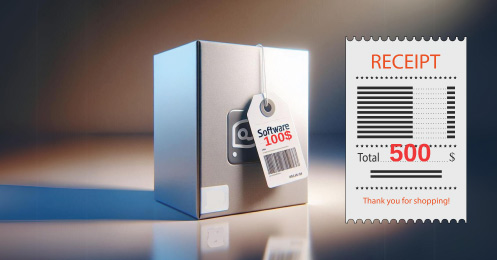We are just months away from the November 27, 2023, (now 2024) DSCSA deadline and there is still much to consider. By now, you should already have started onboarding for the DSCSA deadline; taking the appropriate steps to receive, manage and share DTR and EPCIS file information along the supply chain. But even if you have the latest and greatest systems in place to manage this requirement, you still need to make decisions about existing processes to handle different situations under the new requirements especially those regarding your trading partners.
Remember, regardless of how you plan to receive and send DTR information, at a bare minimum, you will need to work with a solution that can retrieve, store, parse and manage those EPCIS files.
Inbound Realities: Receiving Products from Upstream Partners
Do your suppliers require the automatic transmission of data?
Much of a distributor’s upstream partners are suppliers/manufacturers. Many, if not all, manufacturers in the Pharmaceutical Supply Chain have already confirmed that they will be complying with DSCSA Interoperability guidelines using the internationally recognized file standard of EPCIS (example: Amerisource Bergen’s EPCIS Spec).
Come the November deadline, some suppliers will not do business with you unless you’re able to automatically and electronically receive EPCIS files containing DTR information. This will require setting up AS2 connections as some suppliers will want to be able to directly connect to your internal systems to send you data. If your suppliers require direct connections to share EPCIS file information, you’re running out of time to start exploring software options if you don’t already have a system in place that can manage this. Make sure you prioritize the search for the right type of system, keeping in mind implementation timeframes.
What happens if your system does not find DTR information associated with an inbound shipment?
Many distributors are receiving inbound shipments today, that won’t be sold and shipped to customers until after the November 2023 deadline. In this situation, unless you want to open each case and scan each individual unit on shipping, you must receive the appropriate DTR information along with all inbound shipments now. If you’re still waiting to get the appropriate systems in place, speak with your supplier about how you can receive this information in the meantime – consider email or sFTP files as an option.
In the meantime, to manage product that does not include DTR information, consider setting up a dedicated “product review/holding/quarantine” section of your warehouse. You may already have a similar area set up in your warehouse for Suspect or Illegitimate products. Make sure that this area is secure. Once a product has been safely quarantined, it is important to dedicate a staff member (or group of employees) that are responsible for contacting the supplier/manufacturer to get the correct information before the product is added to your inventory for sale. If you don’t have a “process” in place, consider creating a procedure so everyone involved knows what to do when the time comes.
Once the deadline has passed, all inbound shipments should have accurate DTR information. However, if not, you want to be prepared.
What happens when you receive shipments with incorrect or missing data?
Occasionally, you will receive shipments with the correct product but the wrong information or vice versa. On the extreme end of the spectrum, this could look like a full truckload delivery sitting in your parking lot because the file sent with the order doesn’t match. As of November, by law, distributors will be treating these items as “Suspect or Illegitimate” and quarantining the product if it’s received into inventory. This transitional inventory is expected to cause lots of headaches for suppliers and distributors alike and so as a result, the FDA is currently working on an exceptions guidance to deal with these types of situations.
Outbound Realities: Shipping Products to Downstream Customers
If you are not already speaking with your downstream partners about their ability to receive DTR information via EPCIS files, you are running out of time. Many independent dispensers around the U.S. are struggling to meet the upcoming deadline and requirements. If you want to keep selling your product to these dispensers, as a starting point, make sure they’ve set up their GLN’s (Global Location Number) and are actively setting up the systems and processes to receive pharmaceutical products after the November deadline. If your downstream partners are not prepared, you will not be able to sell to them.
What happens if your system doesn’t find DTR information on an outbound scan of product as part of a sales order?
If you have inventory in your warehouse that you received PRIOR to mandating the receipt of EPCIS and DTR information from your suppliers, this will cause issues when you go to ship that product to customers after the November 2023 deadline.
Essentially, it will require that you open up each package/case and scan the smallest salable unit to record DTR information to create an updated EPCIS file. This is not the ideal situation and will significantly impact your shipping times and ability to get orders to customers. However, this can be easily avoided by starting to collect DTR information from your suppliers today (even if you are still in the process of implementing the right systems to manage this automatically).
Technology Requirements
Managing all the requirements set forth by the DSCSA requires that you have the correct systems and technology in place. Speak with your current service provider to determine if they have the functionality to handle EPCIS files. If not, you may need to consider finding a different service provider – but be quick, as you’re running out of time. You must prioritize the search for the right software system and keep in mind implementation times. Software implementations do not happen overnight!










